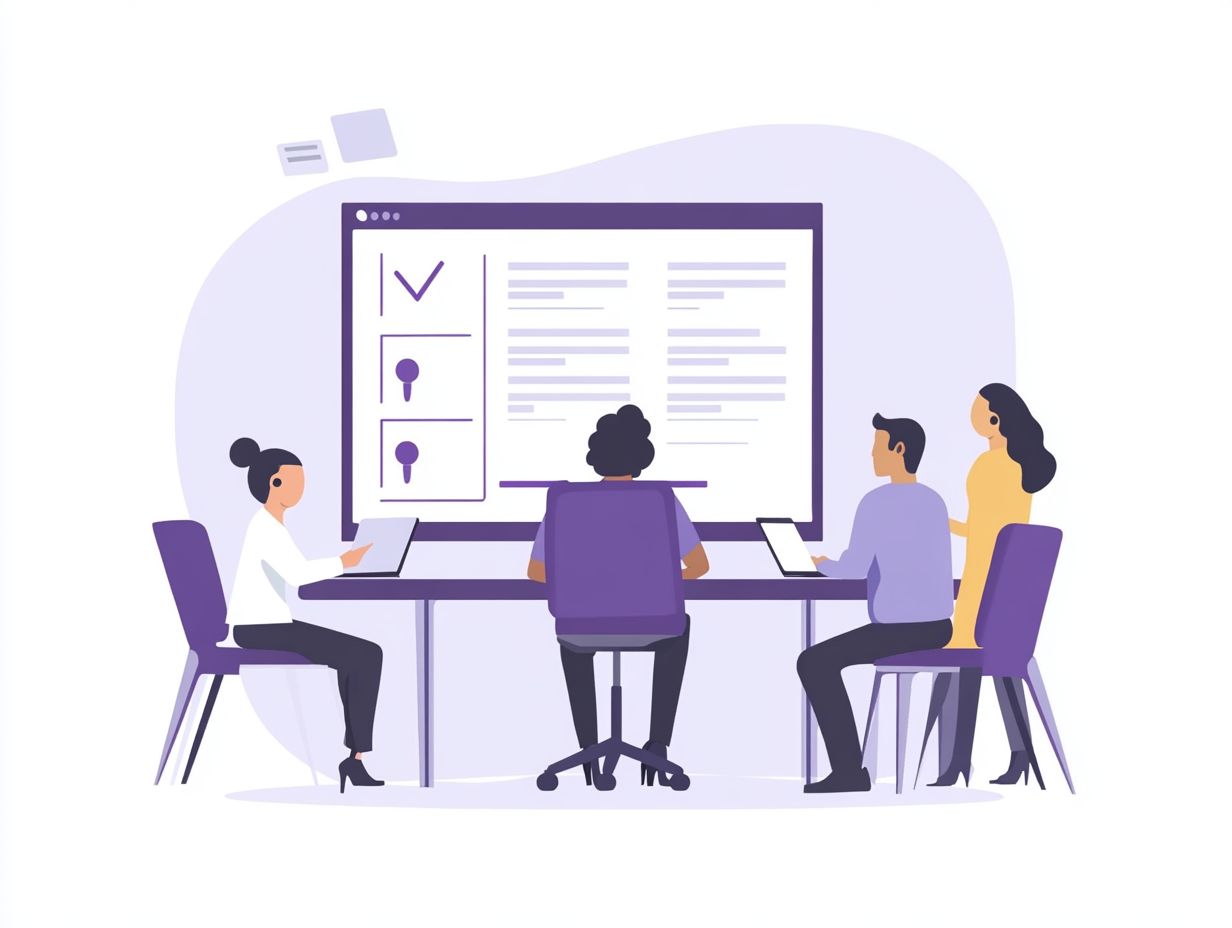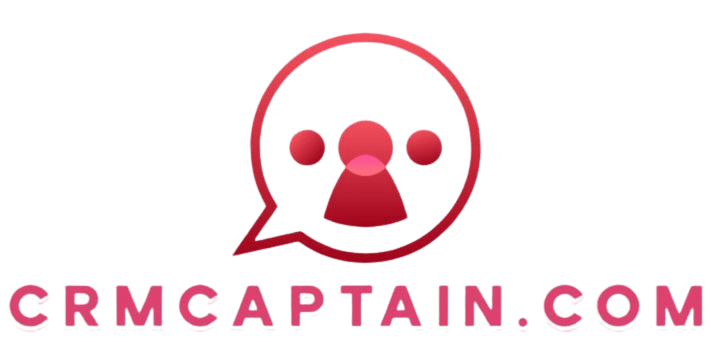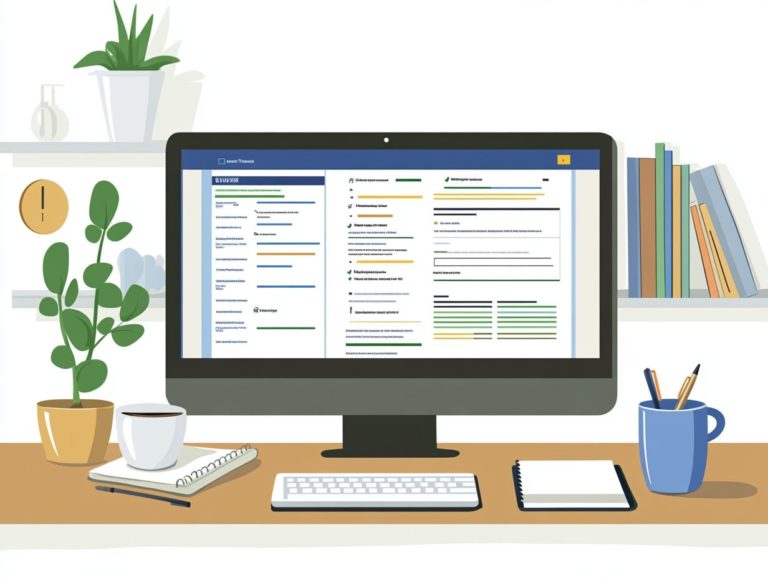“5 Ways to Measure CRM User Training Effectiveness”
In today s fast-paced business landscape, effective CRM user training is essential for unlocking the full potential of your customer relationship management system.
This article delves into five key metrics that allow you to assess the success of your training programs, highlighting everything from increased user adoption rates to enhanced data quality.
It also emphasizes the significance of measuring training effectiveness, the common challenges businesses encounter, and strategies for ongoing improvement.
By grasping these vital elements, you can boost productivity and create a positive user experience within your organization. Keep reading to learn how to supercharge your CRM training and unlock amazing benefits!
Contents
- Key Takeaways:
- 1. Increase in User Adoption Rates
- 2. Improvement in Data Quality
- 3. Reduction in User Errors
- 4. Increase in Efficiency and Productivity
- 5. Positive Feedback from Users
- What Is CRM User Training and Why Is It Important?
- Frequently Asked Questions
- How to Measure the Effectiveness of CRM User Training?
- Why Measure CRM Training? Unlock Your Team’s Potential!
- Tracking Participation: Uncovering Engagement Levels
- Importance of Assessments Before and After Training
- Gathering User Feedback: A Key to Continuous Improvement
- Analyzing Post-Training Metrics: Measuring Success
Key Takeaways:

- Increased user adoption rates lead to successful CRM system implementation.
- Improved data quality is a direct result of effective user training.
- Reduction in user errors saves time and resources for the business.
1. Increase in User Adoption Rates
Increasing user adoption rates for your CRM system can dramatically elevate your overall business performance. When your team fully engages with tools designed to streamline sales, marketing, and customer support processes, you re not just increasing metrics; you re boosting user satisfaction and fostering business growth.
Successful adoption relies on effective training and user engagement. When team members find the CRM intuitive and easy to use, their chances of integrating it into their daily routines soar.
Customization features also play a pivotal role. When users can tailor the CRM to suit their specific needs, it fosters a sense of ownership and investment in the system. As these elements contribute to higher adoption rates, you ll likely observe a corresponding boost in engagement metrics.
This uptick not only enhances the customer experience but also elevates satisfaction scores, ultimately cultivating a more loyal customer base.
2. Improvement in Data Quality
Improving the quality of data within your CRM system is essential for generating accurate insights. This will, in turn, enhance your smart decision-making and elevate overall business performance.
When you prioritize data accuracy and completeness, you can improve key metrics such as customer lifetime value (the total worth of a customer to your business over the duration of their relationship) and acquisition cost (the cost associated with acquiring a new customer). Accurate data enables you to gain a deeper understanding of customer behaviors and preferences, leading to more effective targeting and retention strategies.
To achieve this, consider employing various tools and methodologies, including data cleaning software and validation techniques like regular audits.
By ensuring that your information is not only accurate but also comprehensive, you position your business to make informed choices that drive growth and profitability. This crucial step can turn your data into exciting insights that drive growth!
3. Reduction in User Errors
Reducing user errors in CRM operations is essential for enhancing efficiency and allowing your sales and marketing teams to concentrate on their core objectives, free from the burden of preventable mistakes.
Common user errors, like data entry inaccuracies and miscommunication, can significantly disrupt your workflow and obstruct the attainment of strategic goals. These blunders not only squander resources and opportunities but can also strain relationships with clients.
By adopting robust automation tools, you can streamline processes and diminish the likelihood of human error. When paired with comprehensive user training, your team will develop a deeper understanding of system functions and data management best practices, ultimately elevating overall performance and driving superior business outcomes.
4. Increase in Efficiency and Productivity

An increase in efficiency and productivity through effective CRM utilization can yield remarkable results for your business. This approach enables your teams to cut operational costs and optimize time management while enhancing service and support.
By using automation tools, your team can eliminate repetitive tasks like data entry and follow-up calls. This allows employees to focus on more strategic initiatives.
For example, a marketing firm that put automated email campaigns into action based on customer interactions saw a 30% increase in engagement rates.
Streamline workflows by integrating your CRM with other software to enhance collaboration and transparency across departments.
Consider a retail company after integrating their inventory management system with their CRM, they experienced a significant reduction in stock discrepancies and improved sales forecasting. This ultimately boosted their performance metrics and drove growth.
5. Positive Feedback from Users
Gathering positive feedback from users is crucial for evaluating the effectiveness of your CRM system. This understanding is vital for customer engagement and overall satisfaction within your organization.
Employ various methods, such as targeted surveys and customer loyalty measurements, to capture invaluable insights from users who engage with the system daily. These tools let users share their experiences and provide you with a deeper understanding of pain points and areas for improvement.
The feedback collected becomes an essential resource, allowing your teams to refine processes and enhance the user experience. Analyzing trends in this feedback can inspire strategic innovations that align CRM functionalities with user needs, ultimately fostering higher engagement and loyalty.
This feedback is vital for driving continuous improvements and ensuring user satisfaction.
What Is CRM User Training and Why Is It Important?
CRM user training is a strategic investment in your team’s competence and engagement with the CRM system. Its significance cannot be understated, as it directly impacts customer retention, satisfaction, and overall business success.
Equipping your teams with the expertise to navigate the system proficiently enables them to fully leverage its vast functionalities. As users become more skilled at utilizing the CRM, they can effectively track interactions, manage leads, and cultivate stronger client relationships.
This deeper understanding drives key performance indicators, such as close rates and upsell rates, making it easier for your teams to align their strategies with organizational goals. Increased user confidence in the system enhances employee satisfaction and fosters a culture of continuous improvement throughout your organization.
What Are the Key Elements of Effective CRM User Training?
Key elements of effective CRM user training include a comprehensive understanding of the system, practical engagement, and ongoing support essential ingredients for ensuring a positive user experience and maximizing the CRM’s implementation.
Training programs often feature hands-on sessions that allow users to practice in a real-world context, making the learning experience not only relevant but truly impactful.
Access to resources for continued learning keeps users informed about new features and best practices, ensuring they re always ahead of the curve.
Feedback mechanisms are crucial, allowing users to share insights, challenges, and suggestions that can refine the training experience. Customizing training to meet your team’s specific needs enhances effectiveness, ensuring that users feel fully equipped to leverage the system in a way that aligns seamlessly with their unique workflows.
How Can User Training Be Measured and Evaluated?

Measuring and evaluating the effectiveness of user training is essential for understanding its impact on CRM engagement and broader business metrics that signify success.
By concentrating on various metrics and performance indicators, you can uncover valuable insights into how well users are utilizing the training.
User adoption rates reveal how many users are effectively engaging with the CRM tools. Productivity improvements showcase the practical application of the training in real-world scenarios.
To gather this information, organizations often use surveys to get direct feedback from users, highlighting areas for further development.
Performance analysis allows businesses to track changes in metrics over time. This helps determine whether the training has genuinely led to improved outcomes and allows for adjustments in future educational initiatives.
What Are the Common Challenges in Measuring Training Effectiveness?
Common challenges in measuring the effectiveness of CRM user training include the difficulty of isolating the impact of training, interpreting qualitative feedback, and the need for comprehensive metrics to evaluate engagement and performance.
These obstacles can frustrate business leaders who want to see if their training initiatives deliver the desired return on investment.
Many organizations struggle to collect meaningful data that accurately reflects user behavior after training, complicating informed decision-making.
To tackle these challenges, implement structured feedback mechanisms that capture both qualitative and quantitative insights. By leveraging analytics tools, you can gain a clearer understanding of training outcomes.
This approach will enhance the overall effectiveness of your training programs.
How Can a Business Continuously Improve CRM User Training?
Continuously improving your CRM user training is vital for adapting to evolving business needs and maximizing user engagement.
Actively seeking regular feedback, evaluating performance, and strategically allocating resources set the stage for success.
This process involves systematically gathering insights from users to identify pain points and opportunities for enhancement. This ensures that your training remains relevant and impactful.
Regularly updating your training materials is crucial; as systems evolve, your educational resources should do the same, integrating new features and functionalities.
Scalability is essential in this journey. Your training resources must be designed to grow alongside user numbers and system demands, ensuring every new user receives quality instruction tailored to their needs.
This adaptive approach cultivates a culture of continuous learning and boosts overall productivity.
What Are the Long-Term Benefits of Effective CRM User Training?
The long-term benefits of effective CRM user training extend beyond immediate user satisfaction; they significantly affect crucial business metrics like retention rates, revenue growth, and overall customer experience.
When employees are well-versed in CRM functionalities, they can leverage the system to build stronger relationships with clients, leading to enhanced customer loyalty.
For example, a leading retail company saw a remarkable 25% increase in repeat customer visits after implementing a robust training program for their sales team.
Another case study shows how a tech firm boosted its lifetime customer value by 40% after arming its customer service representatives with comprehensive CRM knowledge, enabling them to address client concerns swiftly and personally.
These success stories highlight the critical need to invest in training not just to elevate user engagement but also to drive significant long-term business growth.
Frequently Asked Questions

How to Measure the Effectiveness of CRM User Training?
Discover how measuring your training can lead to amazing results! There are various ways to gauge the effectiveness of CRM user training.
These methods include tracking user participation, conducting assessments before and after training, and gathering user feedback.
Monitoring system usage and analyzing key performance metrics post-training can also provide valuable insights.
Why Measure CRM Training? Unlock Your Team’s Potential!
Measuring CRM user training effectiveness helps companies understand the benefit they get from their training investment.
It identifies gaps in the curriculum and ensures employees utilize the CRM system to its fullest potential.
Tracking Participation: Uncovering Engagement Levels
Tracking user participation shows how involved employees are in the training.
This data highlights challenges and opportunities for enhancement in the training program.
Importance of Assessments Before and After Training
Pre- and post-training assessments allow companies to gauge employee knowledge and skills.
This information reveals training effectiveness and indicates areas needing improvement.
Gathering User Feedback: A Key to Continuous Improvement
Feedback from users offers insights into their training experiences.
This input can pinpoint challenges and suggest enhancements for future sessions.
Analyzing Post-Training Metrics: Measuring Success
Analyzing key performance metrics post-training, like sales revenue and customer satisfaction, helps determine training impact.
If positive trends emerge, it indicates the training was effective.






